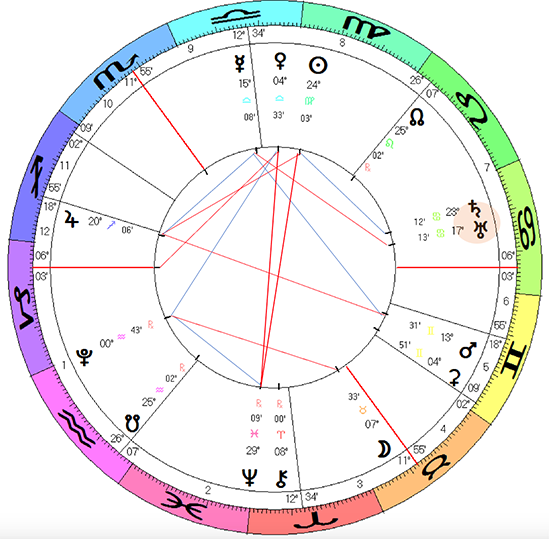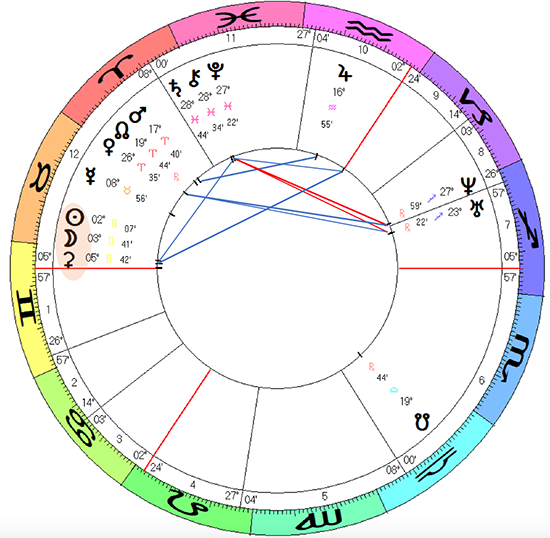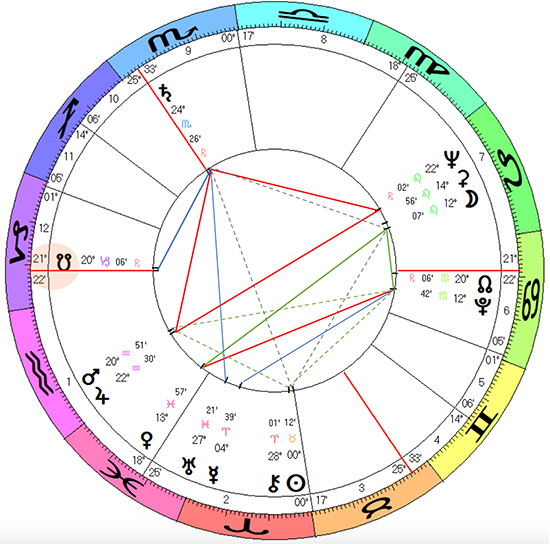It’s just a suggestion, but I think Britain should ban kings and just have queens. They have nice long reigns, and Britain seems to prosper. Kings execute their wives, dilly-dally with ladies-in-waiting, drink and get gout, or smoke too much. Queens are not so eager to go to war, but when they do, then they can drive off the Spanish Armada, give the Russians a good walloping in Crimea, or save all the sheep farmers on the Falklands.
Queen Elizabeth I (1533-1603)
Queen Elizabeth I reigned for 45 years from 1558 to 1603. She was crowned at age 25 – just like Elizabeth II. It was a little risky being queen in those days. Elizabeth’s mother was Anne Boleyn, and she was executed. She was brought up in a dysfunctional stepfamily, and was abused by her stepfather, so in general she wasn’t so keen on men, and did not marry, earning herself the title of Virgin Queen.
Her astrologer John Dee was a treasured advisor and chose the date and time of the queen’s coronation. In his dealings with the queen he almost certainly made no mention of the potential psychological damage which her precarious childhood might have wrought – he wanted to keep his head. Which he nearly lost because he had earlier cast the horoscope of Queen Mary Tudor, charged with ascertaining when she would die, and was arrested and imprisoned for treason.
A modern John Dee would perhaps point to the Moon-Pluto square regarding the mother’s beheading and subsequent stepfamily discomforts, or the Uranus-Saturn conjunction in the 7th house as someone who refused to abide by marriage conventions.

Elizabeth 1: September 17th 1533. 14.54 LMT Greenwich, England
One of the main achievements of Elizabeth I was in creating the Church of England, which counterbalanced the religious wars between Catholics and Protestants that were raging in Europe. Elizabeth believed that the government shouldn’t pry into people’s minds and that it was enough to believe in Jesus, everything else being just trifles. Probably John Dee would have related this attitude and her battles with religious extremists to Sun in Virgo square Jupiter in Pisces – Uranus, Neptune and Pluto were unknown quantities at this time. So the Sun sextile Saturn and square Jupiter reflected this stabilization.
During Elizabeth I’s reign, England prospered and the arts flourished. The queen was present at the first performance of Shakespeare’s “Midsummer Night’s Dream”; she spoke five languages fluently. This is clearly reflected by Mercury in the 9th house trine Mars in Gemini, and Venus in Libra also shows this promotion of the arts.
The designation Virgin Queen may not have been a bit of a misnomer though. With Venus in the 8th house trine Mars in Gemini, many men sought her favors. Her virginity was a subject of gossip in European courts and Catholics accused her of lustful liaisons. And they were probably right.
There is another reflection of Venus in the 8th though. Mary, Queen of Scots, was imprisoned for 19 years in England, a reflection perhaps of Venus opposing Neptune. Mary was the central figure in assassination plots such as the Babington Plot in 1586. Elizabeth’s advisers insisted on Mary’s execution, which took place in 1587. Elizabeth felt her hand was forced by Parliament and she bitterly mourned it. Her progressed Descendant was on Venus at this time, whilst transit Jupiter conjoined Saturn. Rough justice. She didn’t talk to her advisors for months afterwards.
During the reign of Elizabeth I there were many voyages of discovery, led for example by Francis Drake and Walter Raleigh, which set the stage for subsequent colonization and trade. The East India Company was established in 1599. These developments were probably also reflected by Elizabeth’s Mars opposing Jupiter in Sagittarius, and the very businesslike Sun in sextile to Saturn.
Queen Victoria 1819-1901
It was in the reign if Queen Victoria, that these seeds of colonial expansion blossomed. She was born on May 24th 1819. This was the time of the approaching Uranus-Neptune conjunction, which has a 172 year cycle and repeated in 1993. It was a time of upheaval, not least because there was a Saturn-Pluto-Chiron conjunction exactly square Neptune-Uranus at the time – a really heavy astrological constellation. The Napoleonic Wars had just drawn to a close, and within a few years the South American colonies of Portugal and Spain would gain independence. 1819 was a year of the first major financial crash in America. In Britain, the Peterloo Massacre occurred, when British cavalry charged a peaceful crowd of demonstrators, killing many, which reflects the above-mentioned square rather accurately.
Victoria was born with a new moon in Gemini conjoining her Ascendant, which in theory would make her an excellent communicator. She had a gift for drawing and painting, and kept voluminous diaries. She became queen at the tender age of 18, and married Prince Albert in 1840 just as her progressed Descendant conjoined Neptune and squared Saturn. This is of course a tragic combination, but they were very happy together until Albert died aged 42 in 1861 as her Ascendant progressed was approaching a square to Mars and quincunx to Jupiter. She was deeply attached to Albert and after his death she wore black until her death. With five planets in the 12th house along with the North Node, mourning was a path she followed with dedication. She barely attended to her royal duties and it was only over 10 years after his death that she gradually emerged in public once again.

Queen Victoria: May 24th 1819 4.15 LMT London, England
Victoria presided over a Britain which grew to dominate the world – it was said at the end of her reign that the sun never set on the British Empire. The Uranus-Neptune conjunction in Sagittarius reflects this. It was also the flowering of the Industrial Age which Britain was to dominate. During her reign the influence of the Crown diminished and the power of Parliament increased. Massive reforms and new legislation giving the right to vote put power firmly in the hands of parliamentary democracy, and this newfound power is probably indicated by the Saturn-Pluto conjunction in the 11th house.
Queen Victoria’s popularity peaked towards the end of her reign, with massive celebrations at her 50th and 60th Jubilee and she continued her duties until the very end – much like Elizabeth II. She died on January 22nd, 1901 and was buried next to her beloved Prince Albert.
Elizabeth II (1926-2022)
The first Elizabeth reigned for 45 years. Victoria for 64 years, but Elizabeth II topped this with a reign of 70 years. Whilst the first Elizabeth presided over the birth of an empire, and Victoria over its glory, Elizabeth II watched it slowly dissolve, although some of the Commonwealth survives. Well, 14 countries actually, of which Canada, Australia and New Zealand are the main ones, whilst India, the Jewel in the Crown, and 65 other British protectorates have gained independence.
As with the case of Britain’s other Queens, Elizabeth II was born under a massive planetary pattern, with Saturn conjoining the Scorpio midheaven square a Jupiter-Neptune opposition. This T-square in fixed signs connects strongly with the 1801 United Kingdom horoscope, which has a grand cross in fixed signs, with Elizabeth’s Neptune on UK Saturn. This harmonizes with her famous statement:
“I declare before you all that my whole life, whether it be long or short, shall be devoted to your service…”
For Queen Elizabeth II, the sacrificial spirit was strong.

Queen Elizabeth II: April 21st 1926 2.40 London, England
Romance was strong too, as one could imagine with Venus in Pisces and Moon-Neptune in the 7th house. She met a young Philip in 1939 when she was 13 and he was 18, just as progressed Venus conjoined Uranus and her Descendant conjoined the Moon. He must have been like a lightning bolt out of the blue. During the war years they corresponded, and married – despite the objections of the family – in 1947, with progressed Sun exactly square Mars and progressed Ascendant square Saturn. Which probably showed some of the early trials in that marriage, as Philip, the navy commander (that Mars-Neptune) liked his ships and his men’s clubs.
The now King Charles III was born in 1948, and Elizabeth went on to have three more children, not as many as Queen Victoria who had nine, but a whole lot more than Elizabeth I, who had none. Elizabeth became queen on June 2nd, 1953, as her Sun progressed conjoined the IC.
Whilst Elizabeth II was wedded to her duty as a monarch – Capricorn rising sextile Saturn-MC – her children have been the source of considerable distress. Charles, with a Mars-Jupiter conjunction in Sagittarius in the 5th house sired two boys, but he was not exactly faithful, whilst Prince Andrew, the Pisces, drifted into a moral morass.
1993 was Queen Elizabeth II’s disaster year – Annus Horribilis – when Prince Charles separated from Princess Diana, Prince Andrew separated from Sarah Ferguson, and a conflagration burned down some of Windsor Castle. For her, this was a Uranus year. Progressed Venus was conjoining the Ascendant and both sextiled Uranus, whilst the MC also sextiled Uranus. In other words the AS/MC midpoint was now on Uranus. It did not help that transiting Pluto conjoined her MC at this time, either, whilst the Uranus-Neptune conjunction danced back and forth on her Ascendant.
As the reign of Queen Elizabeth II reached its end with her death on September 8th 2022, there were many indications of her passing. Her husband Prince Philip had died the year before when her MC progressed was square Saturn, and duties must have weighed heavy. It’s a source of wonder and admiration that just days before she died, she kept up the tradition of welcoming new Prime Ministers, this time Liz Truss, the last in a line of 15.
By 2022 progressed Mercury had just turned retrograde at 21 Leo, which meant that it was conjoining Neptune and dwelling stationary opposing Mars in Aquarius for about three years. As her progressed Moon reached 22.47 Aquarius conjoining Jupiter, she passed. It is estimated the four billion people watched at least part of her funeral, which took place as transit Uranus opposed Neptune in the 1801 UK horoscope within 6 minutes of arc. Mass tears were shed.
As Paul McCartney said, describing the meeting of The Beatles with her in 1965: “She was just like a mum to us”.
Adrian Duncan
September 20th 2022.
